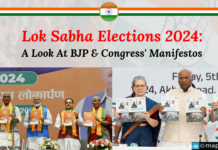Ask anyone about the meteoric rise of the common man’s party and you will get a flurry of eulogies. Leave aside our home grown media; even the global news agencies have been strewing gallant stories about the AAP (Aam Admi Party). While some say that “a reluctant politician has staged one of the biggest electoral upsets in recent history”, some are of the opinion that it’s a “remarkable rise” of the Kejriwal “from the ashes of a street protest movement.”
As I stumbled upon some of the stories pertaining to AAP it occurred to me that the foreign media interpreted Delhi elections result as a rare specimen of India’s youngest political party becoming the beacon of hope for the majority of population. Reputed members of the Fourth Estate including Reuters and Al Jazeera are also endorsing the common perception that AAP is not only looked upon as a “workable alternative to inefficient governance” but also as the vehicle for change in corruption-ridden political landscape.
The AAP’s clarion call for cleaning politics got the fuel at right time – two years ago. But staging agitation and running administration are two dialectically opposite things. There’s no denial that the party has been true to its motto of clean politics by maintaining transparency in fund collection. It has also adhered to its view of promoting ‘participatory democracy’ by designing constituency-specific poll manifesto. It’s also true that AAP has shown elections can be fought successfully without criminalizing politics and without muscle power. They neither had any star campaigner and nor they resorted to big rallies.
The vision document of AAP has put down the party’s thoughts in simple terms – “tear down the power conclaves and pass on the power directly to public.” It also states that UPA government’s economic policies are “more indulgent towards money grabbers and share market instead of genuine people.” While some of the aspirations of the party border on idealism (e.g. Creation of a Just and Equal Society free of Prejudice and Oppression), most of them sound realistic. Ending caste humiliation and violence, stopping victimization of farmers, upgrading government schools and hospitals to world standards are some immediate agendas, as cited in the document.
With a somewhat convincing vision document at disposal, a considerable support of the youth and first-time voters, AAP has every reason to feel empowered. People are already talking about the party being the harbinger of clean politics in the future. But politics doesn’t get cleaned overnight. The present scenario is indicative of the party growing as an opposition. It is to be observed how much AAP can grow in time, especially before the general elections. It is also to be seen how quickly and effectively can the political entity learn to run a country?
Online discussions give me a feeling that we are reading too much into AAP’s success. Countrywide replication of what AAP did in Delhi seems like a very distant possibility. It would be difficult for the party to find leaders at local levels and identify issues that can provoke uproar among the people across states. We can take refuge in ideating the party’s greater political responsibilities till the time it attains a national stature.




